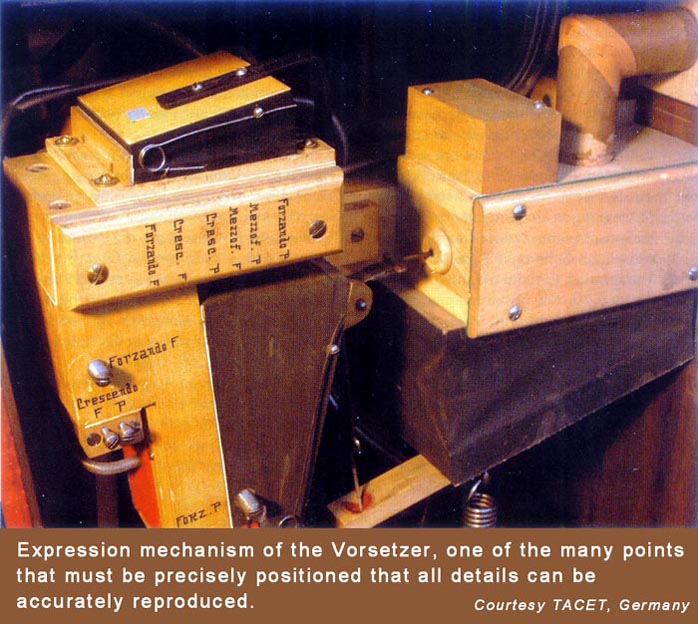 |
|||
|
|||
And Duo-Art’s Pianola spokespersons included Ignace Paderewski, Josef Hofmann, Percy Grainger, Vladimir Horowitz, Artur Rubinstein and Myra Hess. It’s interesting to note that some of these legendary pianists were first signed up with Edison’s company or others like the Victor Company and recorded on cylinders and 78s, but they soon jumped across to piano rolls as well. |
|||
 |
|||
 |
|||
Rachmaninov was reported to have said, after listening to his own piano roll, "Gentlemen, I have just heard myself play." He recorded 35 Ampico rolls in total between the years 1919 and 1933. The downfall of the piano roll came with the Great Depression and the proliferation of radio broadcasts and electrical gramophone records. The Aeolian Company and the American Piano Company merged and they took over the American successors to the Welte-Mignon as well. Nevertheless, it’s a miracle that the industry is still sustained by some dedicated piano roll makers like QRS Music. Here is a must-see video of their computer-aided production with century old machines. |
|||
 |
|||
For the knowledge hungry, the most comprehensive and resourceful website on piano roll is pianola.org owned and managed by Rex Lawson, who is also the pianolist of this 2L recording and incidentally my technical advisor who saved me from the embarrassment of giving out wrong information. (Whisper: "Thank you!") The reproducing piano roll is an analog recording/reproducing method that recreates the performance on a real piano. When assisted with modern computer technology and captured with state-of-the-art digital recording technique, the lifelikeness is without question. Yet skeptics question the authenticity and credibility of the re-performance. |
|||
 |
|||
 |
|||
 |
|||
  |
|||
 |

